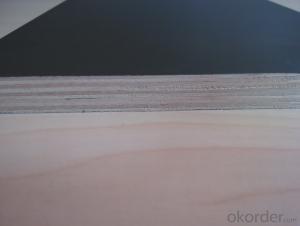Plywood Sizing: Navigating the 1/4 to 3/4 Options
When you’re ready to dive into a new woodworking project, one of the first things you’ll need to consider is the type of plywood you’ll use. Plywood comes in a variety of sizes, but the most common thicknesses range from 1/4 inch to 3/4 inch. Each thickness has its own set of advantages and ideal applications, and choosing the right one can make all the difference in your project’s success. In this article, we’ll explore the ins and outs of plywood sizing, from the characteristics of each thickness to the types of projects they’re best suited for.
Understanding Plywood Thicknesses
–
Before we get into the specifics of each thickness, it’s important to understand what plywood is and how it’s made. Plywood is a versatile and durable wood panel made from thin layers of wood veneer that are glued together with the grain of each layer positioned at right angles to the layers next to it. This cross-grain construction gives plywood its strength and stability. The thickness of plywood is measured in inches and is determined by the combined thickness of all the layers.
1/4 Inch Plywood
1/4 inch plywood, also known as ‘A’ grade plywood, is the thinnest and lightest option available. It’s perfect for projects where weight and portability are a concern, such as folding furniture, portable stages, or even art projects. The thin profile of 1/4 inch plywood makes it easy to cut and shape, and it’s also less expensive than thicker options. However, because it’s thinner, it’s not as strong or rigid as thicker plywoods, which can be a limitation for some projects.
1/2 Inch Plywood
Moving up in thickness, 1/2 inch plywood, or ‘B’ grade, is a popular choice for a wide range of applications. It’s thicker and more robust than 1/4 inch plywood, making it suitable for projects that require more strength and rigidity, such as cabinetry, shelving, and furniture construction. The added thickness also provides better resistance to warping and denting. While it’s more expensive than 1/4 inch plywood, it’s still a cost-effective option for many DIY projects.
3/4 Inch Plywood
At the top end of the spectrum, 3/4 inch plywood is the thickest and most robust option. It’s ideal for heavy-duty applications, such as countertops, workbenches, and structural components in construction. The extra thickness provides无与伦比的 strength and durability, making it a favorite among professional woodworkers and contractors. However, the increased thickness and weight can make it more challenging to work with, especially for those who are new to woodworking.
The Emotional Side of Plywood Choices
–
Choosing the right plywood thickness isn’t just about the technical aspects; it’s also about how the material feels to you. The tactile experience of working with different thicknesses can influence your project’s outcome and your enjoyment of the process. For some, the lightweight and easy-to-manipulate nature of 1/4 inch plywood is a joy, while others find satisfaction in the heft and solidity of 3/4 inch plywood.
Personalizing Your Plywood Experience
As you navigate the world of plywood, remember that your personal preferences and the specific needs of your project should guide your decisions. Whether you’re drawn to the affordability and ease of 1/4 inch plywood, the versatility of 1/2 inch, or the strength and durability of 3/4 inch, there’s a plywood thickness out there for every project and every woodworker.
The Bottom Line on Plywood Sizing
–
In conclusion, understanding the different plywood thicknesses and their applications is crucial for any woodworking project. From the lightweight and portable 1/4 inch to the robust and heavy-duty 3/4 inch, each option brings its own set of benefits and challenges. By considering the specific requirements of your project and your personal preferences, you can make an informed decision and select the perfect plywood for your needs. So, roll up your sleeves, grab your tools, and get ready to create something amazing with your chosen plywood.

